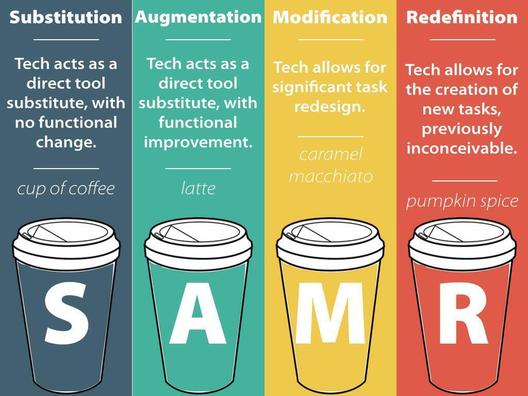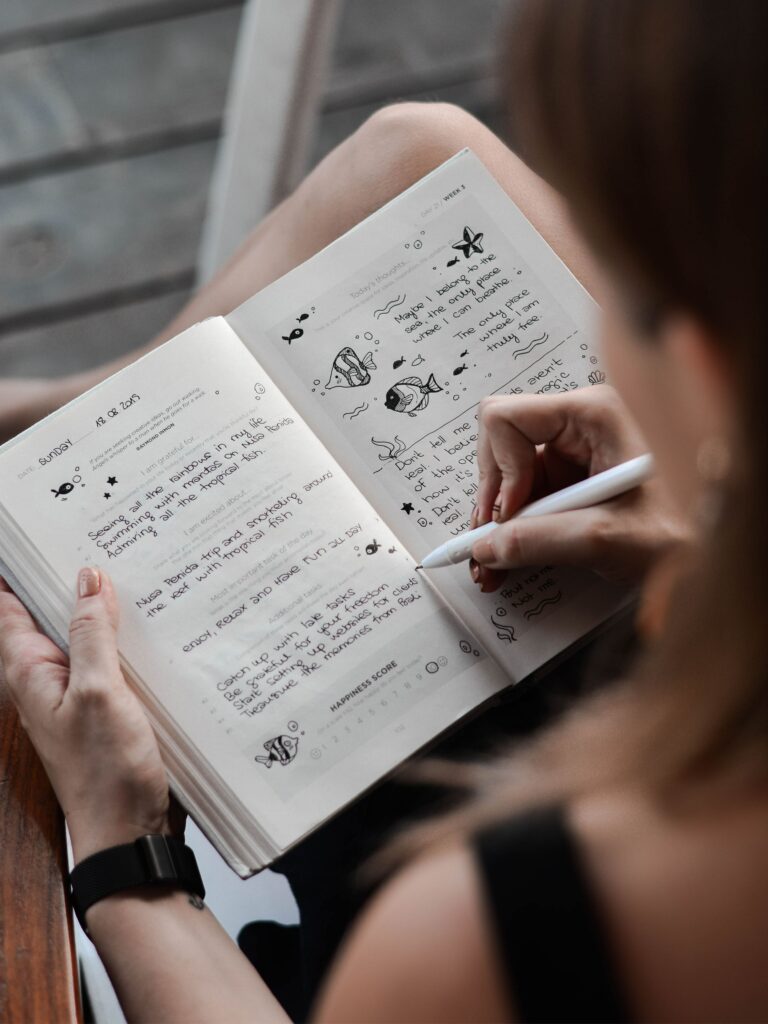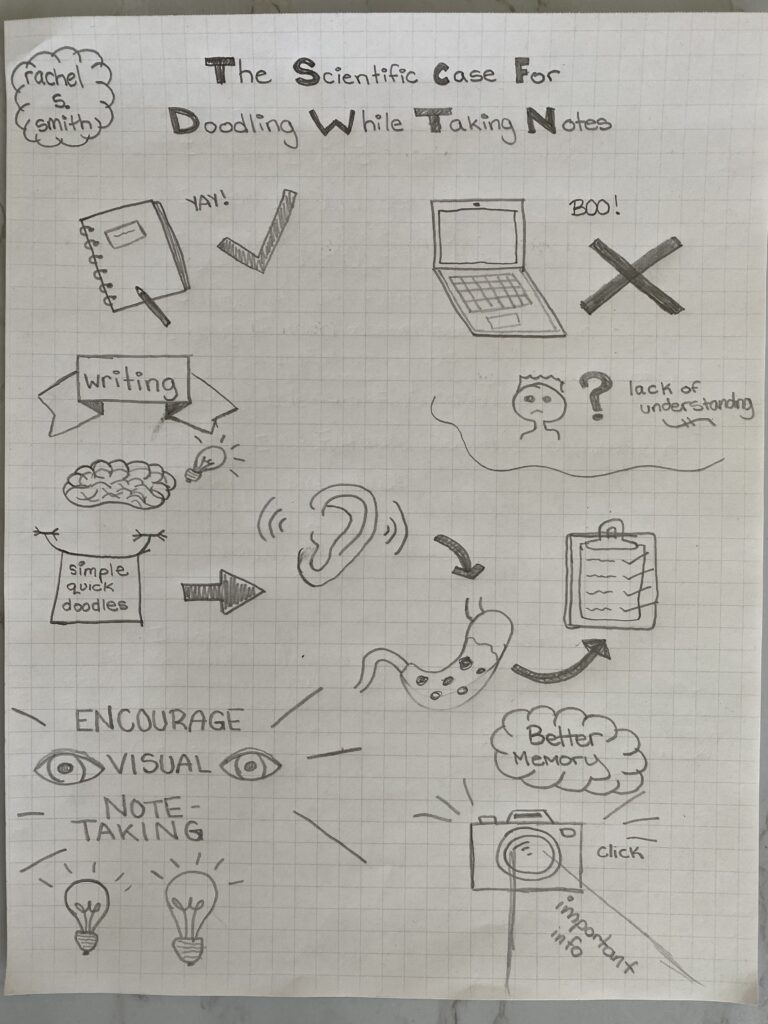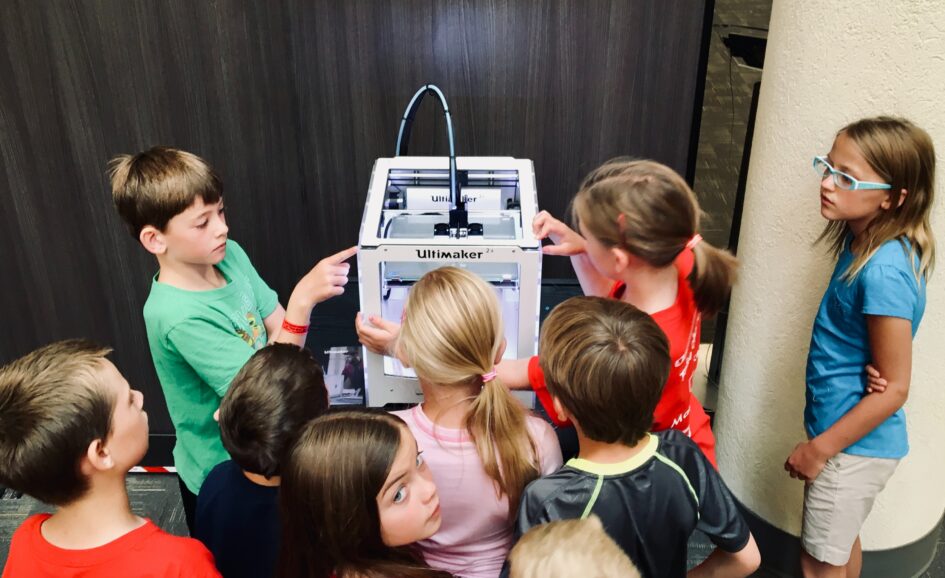The SAMR theory of technology, created by Dr. Ruben Puentedura, categorizes technology integration in the classroom to determine how to use technologies for various activities. The categories are made up of substitution, augmentation, modification, and redefinition and help make the integration of technology into education more seamless for both teachers and students. Different lessons will fit best within different categories which is why it helps to think of this model as a spectrum. At one end, technology becomes a replacement for some sort of traditional tool and at the other end, technology creates new experiences that previously weren’t possible.
- Substitution: Technology is directly substituted for a traditional tool/method
Ex. students might create a PowerPoint for an assignment rather than a physical poster
- Augmentation: Technology is substituted for a traditional tool/method but also has significant improvements to the experience
Ex. Students may watch a video on a certain subject which contains interactive links that take them to information relevant to the subject
- Modification: a change is made to the lesson’s actual design or learning outcomes based on technology. (technology alters the learning task)
Ex. Student groups could collaborate on a project in a learning management system such as Moodle or google classroom and then solicit feedback from others through online comments and discussions
- Redefinition: a novel experience is created with technology that would not be possible without it
Ex. A classroom could connect online with another classroom somewhere in the country to work on a joint project together
The SAMR model helps determine how technology might be useful for a lesson as well as when it might be useful. There are tasks when a pen and paper are necessary so the implementation of any technology wouldn’t work. However, other times a typed assignment may be a better choice. This model helps, you the teacher, decide what the best choice will be for a particular lesson/activity. Perhaps most importantly though, this model helps educators be purposeful in how they integrate technology into their classroom. It is not enough to watch a lesson on video that is the same as if it were given in person. Technology integration needs to be beneficial for students’ learning experience.

Well, no perfect model or process exists for selecting the most appropriate technological tool in a classroom, the SECTIONS model can provide educators with a good framework. This model provides a set of criteria that can help educators narrow down the best technology or media to employ for a lesson. SECTIONS stands for the following;
- Students – need to consider 3 areas surrounding students – demographics, access, and differences in learning
- Ease of use – the purpose of the technology isn’t learning how to use it but using it to learn about something else
- Cost – the cost of developing, distributing, and using various media/tools
- Teaching functions, including pedagogical affordances of media – how the chosen media relates to pedagogy and purposes of the lesson
- Interaction – how does the chosen media enable interaction? how does it employ active learning?
- Organizational issues – services available at your institution, support is provided for media, the institution has an expected structure for technology usage
- Networking – how does the medium provide students with opportunities to useful information and individuals outside of the classroom
- Security and privacy – does the technology provide a safe, private space for students to work online?
As the teacher, start with a few ideas of what you may like to employ in your classroom or for your lesson, then move through the SECTIONS model to help you determine whether your ideas are best suited to the situation and will provide students with a beneficial experience. If the answer is no, start again this time looking at the model first to try and come up with appropriate ideas. Build a case or evidence to support or reject the use of the technology and go from there. Once you’ve moved through this process a few times it will get easier to decide what works for a situation and what doesn’t. The choice you make may not always be excellent but this model helps you narrow down experiences that will provide your students with enriching opportunities.

Sketchnotes!
Sketchnotes are visual notes created from both handwriting and drawings or doodles and shapes to create more engaging notes. Sketchnotes are meant to be ideas, not an art project so sometimes the only ‘art’ a note may contain is arrows and boxes. Research shows that individuals retain more information when taking notes down on pen and paper over typing them on a computer. But here’s the best part, doodles help our memories too. Doodling can keep us more focused during a lesson and improve our understanding and retention of the topic. So, anyone who likes to doodle rejoice, you can take useful notes and have fun doing it!Thinking about my own teaching career, I hope to teach primary-aged students anywhere from kindergarten to third grade and I believe that sketchnotes certainly have a place in those grades. Children love to colour and draw, almost every parent and teacher can attest to that, where somewhere on their home or classroom walls is hanging a child’s drawing. So it only makes sense to let kids draw their thinking as well! I absolutely think young students can take notes and record their thoughts through small sketches. In fact, I think some students may love it much more than they would filling out worksheet prompts. I want to give my students opportunities to express themselves not just through words but drawings too. And just maybe along the way, they will learn a note-taking technique that they will always love and come back to in the future.

Resources:
Bates, A. W. (2015, April 5). Chapter 8: Choosing and using media in education: The sections model. Teaching in a Digital Age. https://opentextbc.ca/teachinginadigitalage/part/9-pedagogical-differences-between-media/
Fastiggi, W. (n.d.). The SAMR Model. Technology for Learners – Learn to use Technology and use Technology to Learn. https://technologyforlearners.com/the-samr-model/
Rhodes, K. (2017, January 8). Sketchnoting, doodling, and visual note-taking. Clarity Innovations, Inc. https://www.clarity-innovations.com/blog/krhodes/sketchnoting-doodling-and-visual-note-taking
Powerschool. (2021). SAMR Model: A Practical Guide for K-12 Classroom Technology Integration. https://www.powerschool.com/resources/blog/samr-model-a-practical-guide-for-k-12-classroom-technology-integration/#:~:text=The%20SAMR%20Model%20is%20a,degrees%20of%20classroom%20technology%20integration.&text=On%20one%20end%2C%20technology%20is,were%20previously%20impossible%20without%20it
Schwartz, K. (2015, July 15). Making learning visible: Doodling helps Memories Stick. KQED. https://www.kqed.org/mindshift/39941/making-learning-visible-doodling-helps-memories-stick

Leave a Reply
You must be logged in to post a comment.